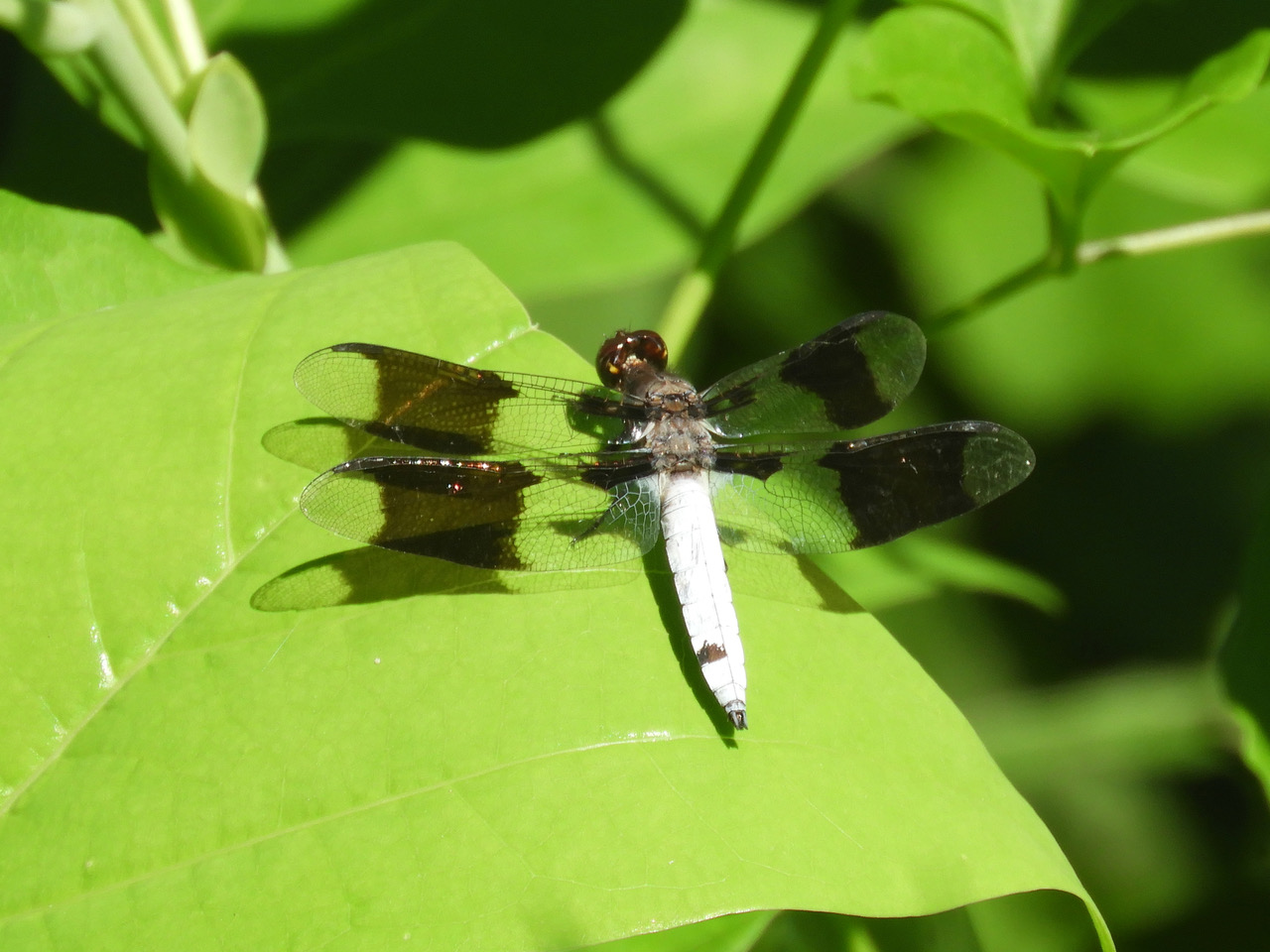Wednesday, August 30, 2023
The numbers of butterflies may be down this year, noted Larry Meade as he led an Aug. 26 butterfly and dragonfly walk for 18 enthusiasts in Dyke Marsh. Nevertheless, the group delighted in finding 12 species, from the summer azure with a one-or-so-inch wingspan to a spicebush butterfly with a 3.5-to-4.5-inch wingspan.
He attributed the lower numbers to several possible factors, including a “cool start” last spring and an ongoing drought resulting in fewer blossoms. Butterflies “eat” or actually nectar on flowers and prefer certain plants. While a few, like the mourning cloak, might emerge from winter hibernation on a warm early spring day, most are active in Northern Virginia from April to October. Butterflies develop through a process called “metamorphosis” and go through several stages called “instars” which take time. “They need warm weather,” Meade explained, adding, “Insects are solar powered. They like the sun.”
“Butterflies are day-flying moths,” he said, and both insects are in the order Lepidoptera. Both insects have four wings with distinctive markings and their larvae are caterpillars. Unlike moths, butterflies have a club or bulb on their antennae and in general are more colorful than most moths.
On Saturday, summer azures seemed abundant, flittering around seemingly erratically. On a leaf or on the ground, they could be mistaken for a little splotch of white bird poop. Zabulon skippers prefer forest edges, said Meade. They were darting around and displaying an orange wing patch. Mating pearl crescents elicited oohs and awe.
The swallowtails, viewed as large butterflies in North America, wowed the walkers. The male eastern tiger swallowtail is yellow with black stripes. There are two morphs of females, one yellow and one black. The tiger swallowtails were nectaring on bear’s foot plants.
Swallowtails have tail-like extensions on each hindwing, hence their name. A black male spicebush swallowtail provided some drama, its bluish, hind-wing bands glowing in the sun.
The group also spotted Needham’s skimmers and common whitetail dragonflies. The whitetail has a striking white body and distinctive dark bands on its otherwise translucent wings. “Dragonflies cannot walk. They fly or perch,” Meade observed.
“Once you start watching dragonflies, you can’t help but notice how amazing they are. They fly at speeds of up to 30 miles per hour, zip forward and backward, pivot in a flash and hover with ease,” wrote Jill U. Adams, in an Audubon magazine article.
In 2022, Friends of Dyke Marsh volunteers documented 31 butterfly species and 22 dragonfly and damselfly species in the preserve.
Migrating Monarchs
While the Saturday group saw no monarch butterflies, Meade predicted that people will see some migrating through the region soon.
These bright orange and black butterflies, which weigh one-fifth the weight of a penny, migrate through Northern Virginia in September and October en route to central Mexico’s mountains. Some will fly 2,000 miles from Canada to reach their winter sites. Monarch caterpillars feed exclusively on milkweed leaves.
Locals have spotted a few monarchs and their caterpillars recently. On Saturday, a monarch caterpillar was under a common milkweed leaf at the Hollin Hall Senior Center’s monarch waystation, clear evidence that an adult had laid a pencil-point-size egg there. Pamela Krist, who lives in Fair Oaks Estates, brought home a sickly-looking milkweed plant from Merrifield Gardens six weeks ago and last week found four monarch caterpillars on the plant. One started what’s called a “J hang,” dangling upside down in a formation resembling the letter J, a step toward forming a green, bag-like chrysalis. Krist moved two to a cloth terrarium with some milkweed plants for their pupation and safety. She plans to tag some monarchs for Monarch Watch, to help track the butterflies’ migration routes and population trends.
“The caterpillar does all the work, but the butterfly gets all the publicity,” said comedian George Carlin. Get ready for some monarch butterfly publicity.